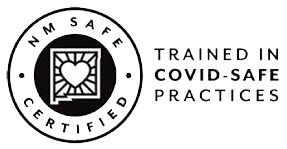Fifty-Seven percent of existing employees think their employer should do more to diversify its workforce. How does your workplace stack up?
Many people want to do business or work for companies that embrace diversity. High levels of workplace diversity have been found to have several positive effects such as reduced poverty rates, increased gross domestic product and improved governance. In fact, 85 percent of companies polled for a report commissioned by Forbes strongly agreed that diversity is a key driver of innovation.
When your organization incorporates the tapestry of differences, it builds stronger bonds with internal and external communities.
HOW DIVERSE IS DIVERSITY?
It’s crucial to recognize that diversity is not a matter of groups, but more individual differences. Everyone is unique, and when qualities are automatically attributed to those who have a certain trait in common with others, difficulties arise. Diversity comes down to the individual, not group affiliation. It’s not skin color, not the religion people do or do not practice, not their country of origin—true diversity is in the way people think and the way people behave. While a group of people can share similar characteristics, there will also be differences—and that’s one reason diversity can have conflicts.
1 TAKE PERSONAL RESPONSIBILITY
Before you can help and support others in embracing differences, you must be a believer. Do what you need to do to remove your prejudices and be open and accepting of differences.
2 RECRUIT
External and internal programs should be developed to reach out to all walks of life. Ask employees for resources and networking groups to approach. Post open positions where different types of people will see them.
2 HIRE
In a fall 2014 Glassdoor survey, 67 percent of those polled said diversity was important to them when evaluating companies and job offers, with minority groups rating it as high as 89 percent. Yet, 57 percent of existing employees think their employer should do more to diversify its workforce.
Interviews should not only qualify for KSAs (knowledge, skills and abilities), but also look to bring in people who think differently. Diverse characteristics (e.g. religion, national origin, etc.) don’t guarantee diverse thinking (nor can you legally inquire about them)—you’ll have to purposely look for diverse thinking.
Write questions that help you discover how people think, not just what they think. Give candidates several scenarios and ask them how they would handle them—have them walk you through their process. Use “behaviorial-based” questions that ask them to describe a problem they have encountered and how they solved it—or to tell you of an idea they have implemented that worked and how they came up with it.
4 MANAGE
Having a diverse workforce places more need on employers to manage in such a way that respects each individual’s perspective harmoniously. Leaders must create a culture where people feel they can be accepted for their authentic selves—where they are eager to share their ideas, even when they are opposite of others, and where others are eager to learn from those differences. It’s not that every thought or idea has to be “right,” but that leaders can identify components that have value and recognize that there is often more than one “right” answer.
There can be stress in dealing with people who are different than you, which is known as “diversity tension.” This tension exists when you work with cultures and situations that vary from your norm. Recognize this tension is a natural reaction and can be managed; reconcile differences, achieve agreement and learn to trust other people’s perspectives and beliefs. Encourage and reward differing opinions. Appoint mentors for those new to the team. If leaders and managers can’t handle conflict and disagreements in a positive way, no staff member will be able to, either.
5 SHAKE UP THE STATUS QUO
Encourage dissenting opinions. Ask questions to solicit disagreement. Make it acceptable to have differing opinions and express them. The best decisions and ideas often come when you eliminate the longest-standing traditions.
- Did I include all considerations?
- What am I missing?
- What can go wrong?
- Give me one negative aspect.
- If this solution/answer/action wasn’t available, what else could be done?
6 HELP PEOPLE OVERCOME BIASES
For those who embrace diversity, it’s difficult to admit they may have biases or prejudices. However, it’s wise to recognize that we all are likely to have some biases in some form, at some time. No one is perfect and there may be biases just under the surface that a person doesn’t even know he or she has. Once acknowledged, you can keep your antenna up and tuned to identify them and thus, be able to do something to change course.
Incorrect or unfair biases are dangerous, and part of the danger is that people aren’t aware of, or deny, them. As a manager, you have your beliefs, plus the beliefs of your staff to manage. When inappropriate biases exist in the workplace, effectiveness is reduced, camaraderie is harmed, discrimination occurs and self-esteem suffers—nothing good comes of it.
Changing your (or others’) beliefs is not always easy. Sometimes, education and exposure are enough to move past sterotypes and remove biases. Sometimes, it’s deeper. The question is: How can you, as a manager, remove employees’ biases? A good first step, of course, is that all leaders of the organization strive to have beliefs that are not biased; that they embrace openness and acceptance and appreciation for differences. Have the CEO write a diversity statement that is posted on the company’s website and incorporate it into the HR handbook.
If biases and beliefs among your employees need addressing, or you’d like them to have more empathy for those who are different, I highly recommend you use an expert. A real expert—someone trained or experienced in how to remove biases—perhaps even a psychologist. Don’t play with this at work: Don’t believe you can read about diversity training and lead a talk that will change deep-seated prejudices. Incorrectly handled, feelings can get hurt, damage can be done to the workplace, or worse.
CONDUCT
Success goes beyond tolerance to honoring, embracing and incorporating people’s differences. The ultimate assessment of your inclusion efforts is the answer to: Are diverse ideas implemented? If the answer is “no,” the causes of inaction must be identified and hard changes might be needed.
Collect differing talents and put them together. Strive for decisions and ideas gathered from differing thoughts and opinions. Live in a multi-cultural world. That’s beautiful music.
By: Natalie Brecher, CPM (JPM)
Click here to subscribe to the Journal of Property Management


